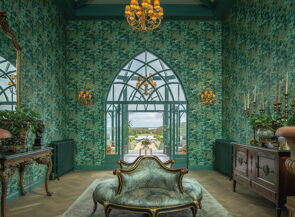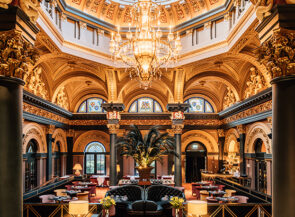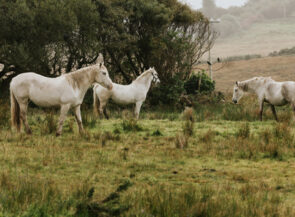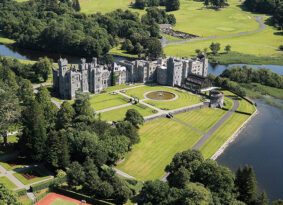The native language and culture of An Ghaeltacht are alive and well
Language is music. Each tongue has its particular cadence, rhythm, and tone and finds a natural partner in one song form or another. German is a march. Italian carries the trills of Baroque chamber music. The Irish language, when I first overhear it in a pub in western Ireland, reaches my ears like an old hymnal, its chordal tang ancient and elegiac. The men upon whom I’m eavesdropping are bent forward, as though discussing mortality—until they burst out laughing and drain their pints. It leaves me feeling, in the words of Irish writer Maurice O’Sullivan, “like a dog listening to music.”
I see this as tús maith—a good beginning, a chance to see a familiar place anew. Ireland has become part of the global community, but the Gaeltacht regions, or An Ghaeltacht, are the root from which the shamrock has bloomed; deeper, darker, and full of ortha an dul amú—the charm of concealment. My ancestors were forced from the country by famine and land reforms during the 19th century, when Gaeilge was at its nadir. The lingual tie to their homeland was severed, but in Ireland a steadfast few still hold their end of the link. Wanting to know what I might glean from hearing that ancestral sound, I’ve come to travel the shredded western coast, from Dingle to Connemara to Donegal, where one can still catch those hymns in the air.
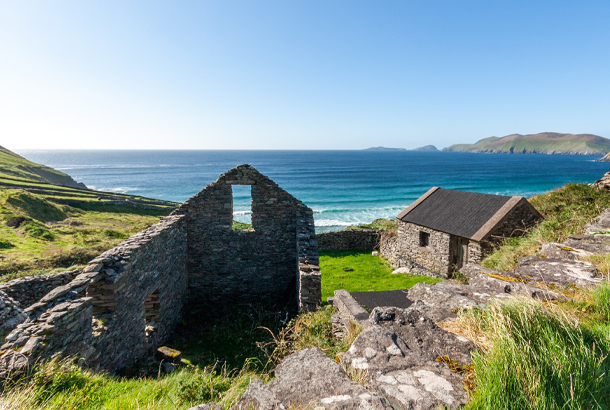
It’s no coincidence that the coast is where the Irish language retains its strongest hold. While English became dominant among both emigrants to the New World and the Irish who lived closer to Dublin, in the western part of the country the native language remained the connection to Gaelic culture. Today, a coordinated effort between governments, schools, historians, and enthusiasts safeguards these social and linguistic traditions. While almost 2 million Irish now claim to speak some aspect of the language, only around 70,000 speak it daily. The majority are found in the counties of Galway, Waterford, Donegal, and Kerry, where I start my journey.
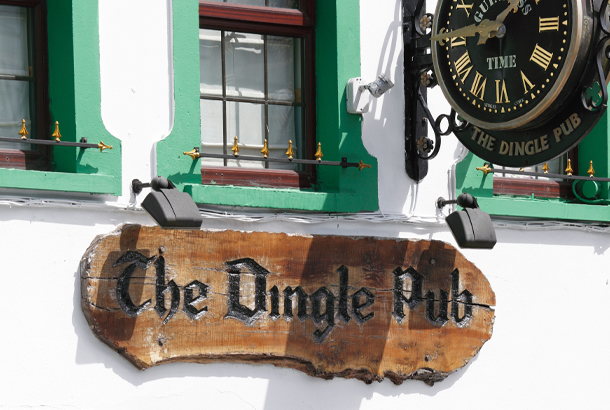
My first stop is the Dingle peninsula, a finger of land sticking out into the Atlantic. Dingle town was once a parochial fishing village, its crooked lanes stacked with lobster pots and gillnets. It has been given a wash and a touch-up as of late; between the bright facades of sweater shops and art galleries hang gilded signs advertising catch of the day with colcannon and curry chips. “We’re the last of the Mohicans out here,” a man tells me in The Dingle Pub, the cream of his Guinness spilling over the lip of his glass. There’s a feeling of the end of things, but also one of hope, that newfound enthusiasm for the language—and quality restaurants, bookshops, and festivals—will keep the area alive. On this early autumn day, the town bustles with walkers and window shoppers, who move to the drone of an Irish dirge that streams from the pub until well into the night. The next morning, I awake in my room at An Capall Dubh (The Black Horse), a guesthouse in Dingle, the bells in my head rung by a clattering of jackdaws. Breakfast is a salvation. Owner Helena Curran serves me eggs laid by her own chickens, cursing the madra rua (red fox) that stole away with one in the night. Curran was raised speaking Irish, and her use of Gaeilge is intrinsic to her stern charisma. “The language is alive here,” she says. She has certainly made it a part of life at her inn. Moving briskly between the tables, she pours coffee and serves plates while giving guests tumbling language lessons. I ask what phrase will best serve me in my time in Ireland. “All you’ll need for now,” she says, “is míle buíochas.”
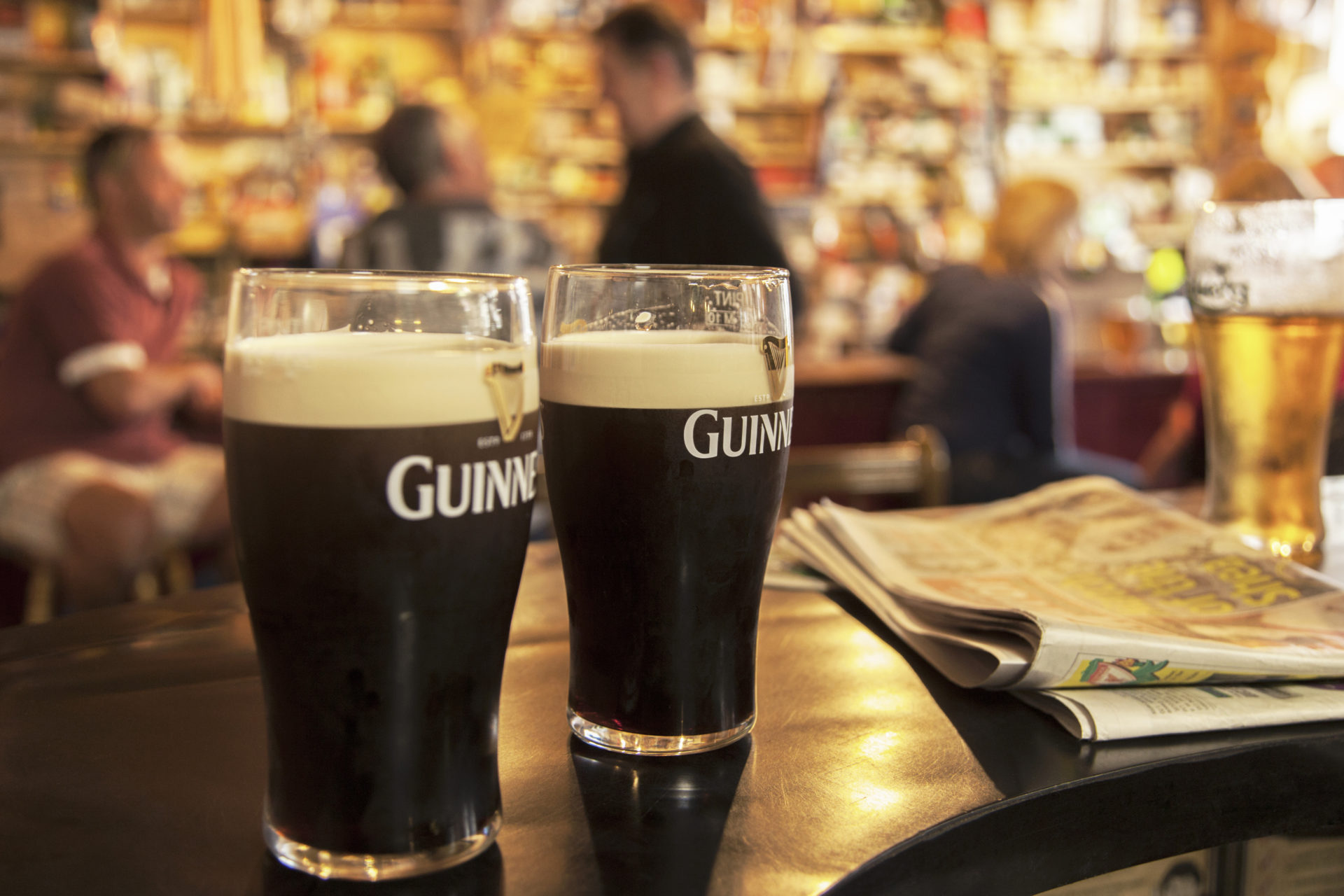
I roll the words around in my mouth: meela bweekus—a thousand thanks. When I tell Curran of my plans to hike out to Dún Chaoin, the westernmost point of the peninsula, she gives me a gáire glic, a sly smile. “It’s always,” she says, “but just grand. The whales are in, so keep a good lookout. The water’s like a sheet of glass today.”
It is as she describes: distant and beautiful. Reaches of azure stripped with white extend in a flush expanse toward the green rise of the Blasket Islands and, beyond, the spectral form of the Skelligs. Now abandoned, the Blaskets were once home to a thriving literary community; the Irish-language canon is supported by islanders Tomás Ó Criomhthain, Maurice O’Sullivan, and Peig Sayers, whose autobiography, Peig, is the bane of Irish schoolchildren.
After a pint in Dún Chaoin, I take the Mám Clasach Road up to the village of Baile an Fheirtéaraigh, the roadside hedged with fuchsia, loosestrife, and quaking-grass with trilobite-like petals shaking in the wind. The sloping hills are like the bumps of a rumpled bed, the fields laid down like the patchwork of an uneven quilt. Walking through the countryside makes for good perspective, b u t t h e we a t h e r makes it impractical. The blue skies are often overtaken by sudden squalls, the wind bringing blocks of rain that flatten the land and leave me cold and drenched. Because public transport in Ireland moves at a pre-industrial pace, I switch to a car, and drive north.
The Gaeltachts are vague geographical areas, generally delineated by where Irish remains the predominant language. They are deeply rural, with advertisements for horse cutting and tractor repair tacked onto telephone poles. For years, their remoteness meant they leaked muscle and brain power, with youth leaving for better opportunities in Dublin or overseas. Today, though, the Gaeltachts are using their language as a strength, to sustain a resurgence that prior generations would have found unthinkable. On the seaside promenade in Galway city, I stop to chat with a man I hear speaking Irish into his cellphone. “Twenty years ago, I would’ve had to emigrate,” he says. “Now, there’s work here. People are building homes, raising their children, and sending them to Irish schools.” He pauses and smiles. “It’s not contrived, if you catch my meaning. The language, it’s not a conscious thing. It’s just who we are.”
There is a feeling among the people who speak Irish that the language is something priceless, like a precious stone kept in the pocket. You don’t speak Irish; you have your Irish. It’s wonderfully exact. There is a word for the roof of a dog’s mouth (carball) and the steam rising from a fermented haystack (bladhmann). Muirleadh is the act of chewing up small crabs and spitting them into the sea for bait. Gabhpán is a double handful, and súitú the clacking of pebbles moved by lapping seawater.
It also imparts the true character of the landscape. During the 19th century, when Irish was systematically replaced with English, the knowledge and legends contained within place names became confused. (It’s not for nothing that Béarla means both English and “unintelligible speech.”) There’s no circular rock at County Galway’s Roundstone village, but there are seals, as upheld by the original name, Cloch na Rón, or “seal’s rock.” Nearby An Cheathrú Rua—“The Red Quarter” for the local population—was anglicized into Carraroe, a nonsense word.
After a night in Galway, I drive west into Connemara, the largest of the Gaeltachts. At the Ionad Cultúrtha an Phiarsaigh cultural center in Ros Muc (which means “peninsula”), my guide, Da í re Ó h Ainmhire, shows me a map made by Tim Robinson, an English cartographer who traveled to western Ireland in the 1970s and ’80s to document the Irish names of places. “Here’s the real Ireland,” he says.
The communities where Irish is still strong, like Leitir Mealláin and Carna, once thrived on fishing, but stocks have declined. The solution has been technology; the internet, far from disrupting life, has allowed people who left to find work in the city to return. Coworking spaces known as Gteic digital hubs have sprung up in small towns around the Gaeltacht, giving remote workers space to type in peace. At the Gteic in Carna, Mairín Ní Choisdealbha-Seoige, a local development officer, tells me that “‘blow-backs—people returning to live in the Gaeltacht—have become as common as ‘blow-ins,’ people moving here for the first time.”
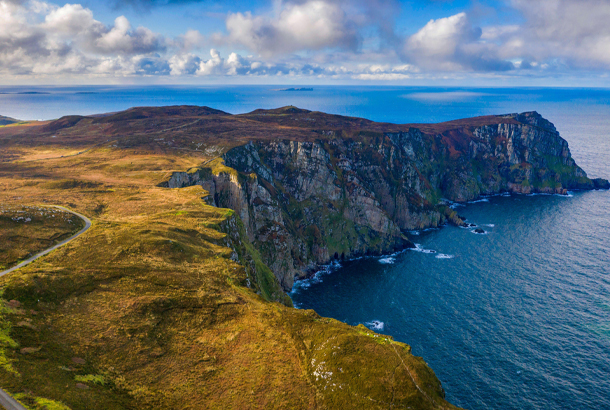
When I ask why else people might visit, she says, “They come for the hysterical walks!” This baffles me, until I realize it’s historical walks. Of course, history weighs heavily on the Gaeltacht, and I visit The Emigrants Commemorative Centre in Carna to explore my own. The Centre gives descendants of Irish emigrants a place to reconnect with ancestors through thousands of documents, records, and photographs. Over ham-and-salad sandwiches in the cafeteria, the likes of which I haven’t tasted since my grandmother’s kitchen, I sit with a group and discuss Ireland’s connection with America—the packages of clothes and money that were sent east from those resettled relatives, the slivers of peat that were sent west like pieces of totemic incense. At some point, I realize those around me are speaking English for my benefit. Language can be a concealer of secrets, but it’s more often used to include. Whenever I let my attention waver, they allow themselves to slip in a phrase or two in Irish, careful not to exclude me but finding comfort in their cradle-tongue.

The comfort of custom is an inherent part of maintaining traditions. The next day, driving through the low hills of north County Galway, I turn at a sign for Joyce Country Wool. Here, at a small-holding on the fringe of Loch Na Fooey, Carina Coyne teaches visitors how to process wool the traditional way, from the raw fleece of her sheep. “My ancestors lived on eggs and socks, just over there,” she says, pointing out the window to a small lime-mortar cottage. Beyond that, a flock of sheep moves across the hillside, elongated and squeezed by border collies like a drop of milk teased across a golf green. As with most Irish speakers I meet, Coyne has strong tírghrá, or love of country. She cards and spins fleece as her forebears did and walks the hills of Connemara to collect ingredients with which to dye her handspun wool. Strung around her shop are skeins tinted red with meadowsweet, ocher with onion skins, yellow with gorse, pink with lichen, green with nettle. “Nothing bright,” Coyne says, handing me a burly sweater. “Put this on, and you melt into the land.”
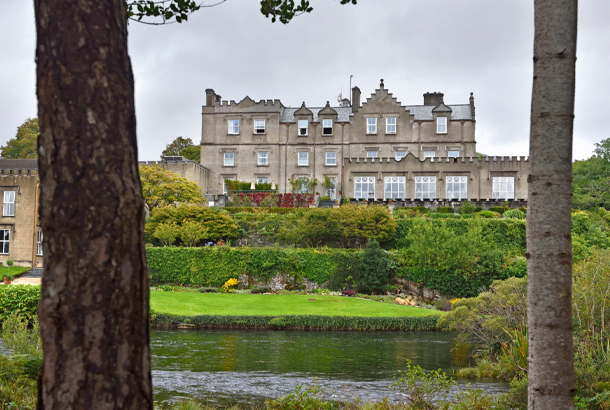
Northern Connemara presents landscapes grander than I thought Ireland could hold. Dry stone walls snake up hillsides like geoglyphs waiting to be translated. The Twelve Bens and Maumturks ranges rise from green leas to rocky tops, the valleys between strung with lakes and ponds. Country manors such as Screebe House, Ballynahinch Castle, and Lough Inagh Lodge maintain airs of antiquated grandeur, with hunting dogs snoring on the carpets and grand paintings hung over soot-stained hearths.
At dusk, I stop at the Inagh Valley Lodge. Lit by the falling sun, the slopes of Binn Bhriocáin blush like a golden pyramid. That night, over my duck in port and plum sauce, I read Manchán Magan’s Thirty-Two Words for Field. From the next table, a man leans over and asks me to explain my breacadh, my scribbling notes. He doesn’t quite ask it that way, though, as he’s lost his Irish. “It’s not quite Chinese,” he says, “but I’m terrible with language.” Growing up in Dublin, he’d maintained a certain level of school-boy Irish, but it was like a rusty bicycle. “I can remember how to ride, but it’s better I don’t get on the thing.” Being in the Gaeltacht fills him with díláthair, the feeling of something missing. “Hearing it spoken so beautifully makes me wish I could.” Cultural stability is security and confidence; many of those I’ve met who lost the language confide such laments. Educational facilities are trying to curb that loss. High school students from across the country, along with interested international students, can spend semesters in the Gaeltacht, at schools such as Carna’s Scoil Phobail Mhic Dara, where they can immerse themselves in the language and stay with local families. Along with a youthful vigor, the students, with their rising enrollment, prove that Irish has a future.
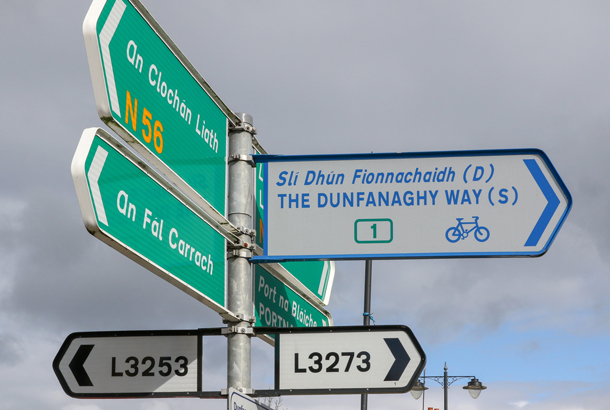
In Donegal, one of the farthest Gaeltacht s from Dublin, many of the bilingual road signs have the English place names struck out with red paint. At An Bun Beag, I meet up with friends, and together we drive north into a sylvan landscape touched with clouds. The hillsides are scarred with peat cuttings, the white bags of bricks like flocks of swans. Here and there, ruins of stone houses poke through the moss and heat her. These carcasses of history heighten the silence, and we go quiet so that we might not break the hallowed calm. As Seamus Heaney wrote, “When you have nothing more to say, just drive/For a day all round the peninsula.”
That is just what we do. To Dún Fionnachaidh, where we tip oysters shells to our lips, filling our mouths with smoky brine. To the promontory of Horn Head, where the deceptively smooth land rises to meet the sea with sheer cliffs. And to Lough Beagh, where the bright sunshine makes sparkling tinsel of the slips of water that trickle down the granite slopes of the Glendowan Mountains. We shed our clothes and slip into the lake like some mythical Irish trio—Gráinne, Deirdre, and Naoise, perhaps.
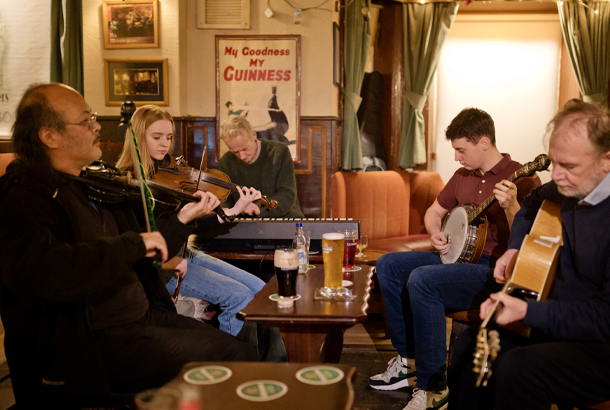
That night at the Teach Hiúdaí Beag pub, we listen to the sound of Irish rising from the tables. As the bartender, Magnus, pulls me a pint, he speaks about his childhood in the village. He is only in his early 20s, but Irish is his first language. I tell him I’ve heard the concern across Ireland that children raised primarily in Irish have trouble adapting to English, that it slows their education and cognition. Magnus scoffs. “It was no bother at all,” he says. “I was like a sponge.”
Around one table, we sense the growing promise of music. First, two young boys with a guitar and an accordion arrive. Then two women draw out their flutes. A man brings a drum, and a girl appears with a fiddle. Soon, there are a baker’s dozen of musicians. Each tune begins tentatively, a fiddler quietly drawing her bow until others join in turn. The songs swell, the players urging each other on, in competition with the rowdy crowd. Then, a lone woman’s unaccompanied voice breaks through the cacophony. Her words are strange and mournful. The lamenting tune carried by her flat alto spreads through the room, which has hushed to listen to this rare and beautiful hymn.
Go West: As the only U.S. airline with nonstop service to western Ireland, United will have two daily nonstop flights to Shannon this summer—one from Chicago and one from New York/Newark—with one-stop access from more than 100 additional U.S. cities.
Take the Trip
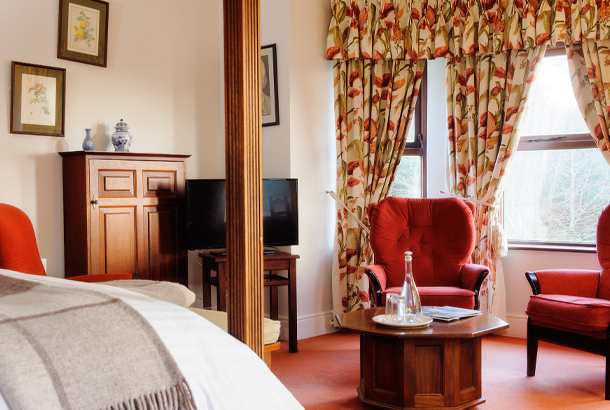
Begin your Gaeltacht voyage on the Dingle Peninsula. Stay at An Capall Dubh in Dingle town, the area’s hub. Head north to Connemara, staying seaside at the Connemara Coast Hotel or in the mountains at the Lough Inagh Lodge, where you can dine on local fare at the on-site Finnisglen Restaurant. Should you make the worthwhile trip to the Aran Islands, a fine bed and breakfast can be found at Árd Einne House on Inishmore. Joyce Country Wool offers spinning and dyeing courses, along with accommodations at Loch Na Fooey. Staying at Teach Hiúdaí Beag puts you at the center of the Donegal Gaeltacht—and also at the best pub in town.

